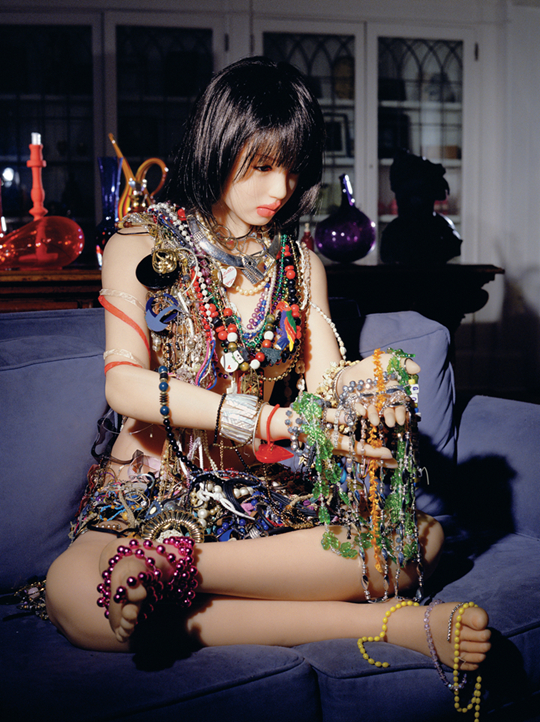SEX DOLLS
| July 24, 2015 | Post In 2015年6月号

Against all odds, life-size dolls have become a repeating theme in popular culture. In a globalized market for capital permeated by neoliberalism, beautiful (and quiet) dolls could easily triumph over annoying women in the f lesh—as we have seen in the American film Lars and the Real Girl and the Korean Air Doll.
Hundreds of thousands of life-size dolls are produced on the assembly lines of factories in China and elsewhere, ready to be delivered to their (mostly male) customers around the globe. Online stores are not shy in promoting their products: “presenting you the human-scale realistic sexdolls for adults!” November 11 is the national carnival for single men in China, known as “Bare Branch Day.” On that date Taobao offers massive discount for virtually everything, including silicon dolls for less than RMB 100. You need to spend more—100 times more—if you fancy a high-end model, because those dolls are “not just sex toys, but works of art.”
Many artists find slogans like this one nonsense. American photographer Laurie Simmons began using life-size dolls in the 1990s, challenging her audience’s “common knowledge” of the female body—as well as their comfort zone—by showing mannequins with tampons inserted in their vaginas, or limbless dolls with swollen breasts. Viewers are forced to reexamine their projections onto women and women’s bodies, programmed by patriarchal consumer society; more recently, Simmons has begun turning real women into dolls by painting anime eyes onto their closed eyelids, posing bodies over and against the unawareness of the subject. The late German artist Hans Bellmer also made used of ball-joint dolls in his works; he cut, reassembled, and twisted his dolls to stimulate reflections on female beauty and the sexualization of female body.
Facing Sherman’s women or Bellmer’s dolls, bachelors may find getting an erec¬tion simply impossible—they can only blame the failure of reality to imitate the simulacra.
Text by Yang Jing


